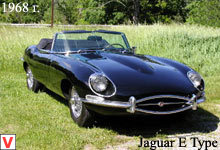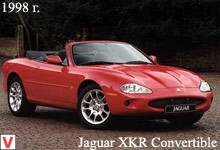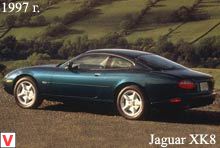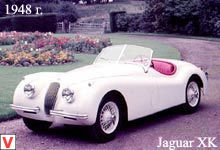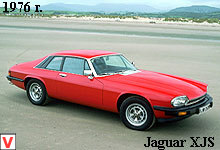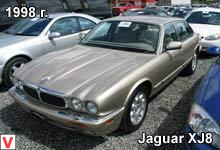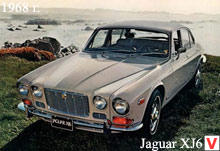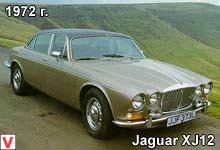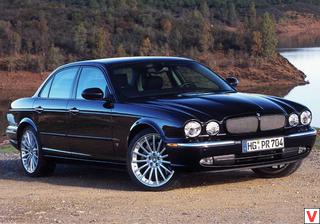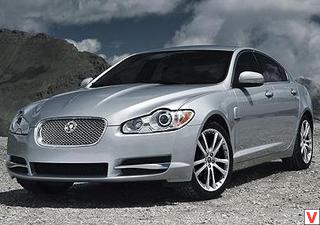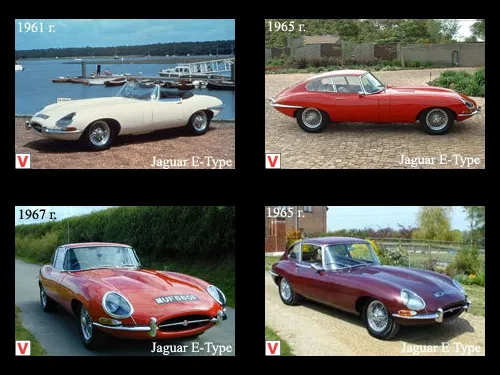
Jaguar E-Type - a sports car with its stunning elegance and unique predatory charm. This model combines the agility of racing cars and the comfort of famous British sedans. Designer Malcolm Sayer and Chief Engineer William Haynes began work on the model in the late 50s. The prototype E1A 1958 and E2A 1960 marked the beginning of the serial Jaguar E-Type, which created a real sensation at the 1961 Geneva Motor Show. The model has replaced the XK series, which has been on sale since 1948.
Stylish and fast-moving car, with sensual lines of a long bonnet, muscular sides, it expressed all the brilliance and optimism of Great Britain in the early sixties. The car not only looked great, but also combined the latest technical solutions with impressive dynamics. The E-Type delivered 240 km / h (150 mph), Accelerated to 100km / h in 7 seconds and cost two times cheaper than the most affordable model Ferrari.
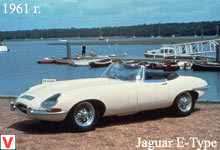
The model was produced in two versions: a roadster and a fastback coupe, both doubles. Success was inevitable. And the car was popular not only in England and on the continent, but also across the ocean. More than 60 percent of Jaguar E-Tours were sold in the USA. The car has become an indispensable attribute of all the inhabitants of Hollywood. The company responded to customers in return. Especially for Americans, they created a version with an automatic transmission, and later even had to slightly reduce the engine power (from 265 to 246 hp) in order for the model to meet the strict environmental standards of the United States.
A long bonnet, made integral with the front wings, when raised, exposed the spatial structure of the engine compartment with a six-cylinder engine and an independent front suspension on aluminum wishbones. The central part of the frame, which is similar in design to the sports model Jaguar D, was extremely durable. Rear independent suspension on a pair of coil springs and wishbones was copied from racing cars. Its special feature was the brake discs that were carried to the main gear. This reduced the unsprung masses and, in turn, significantly improve the car’s handling.
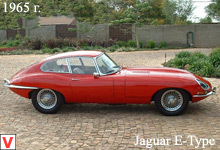
The interior matched the sporting spirit: bucket-shaped leather seats, fully equipped black or aluminum dashboard and wooden sports steering wheel. In 1964, the 3.8-liter engine produces 265 hp. replaced the 4.2-liter, which provided a higher torque at the same power, the gearbox became fully synchronized, installed new headlights and a generator. Small changes were made to the interior. In 1966, the coupe “2 + 2” with an increased wheelbase and the possibility of installing an automatic transmission was added to double models.
The following changes occurred in 1968, when the headlights lost their fairings, the windshield became more vertical, and as an option, you could get a power steering and a safe energy-absorbing steering column. The third series Jaguar E-Tour was released in 1971. All cars (roadster, closed double and coupe 2 + 2) were produced on an elongated chassis.
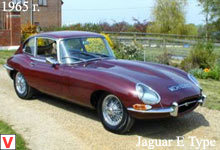
External changes were few - chrome grille and located in the center, four chrome exhaust pipes. But under the hood now stood a 5.3-liter V12 engine with a power of 314 horsepower, with which an automatic or manual transmission was chosen. The power steering has become standard equipment. It seemed that E-Tour was prepared for eternal youth. But the crisis of the early 70s, which had dumped or shook a lot of automobile whales, did not spare the legendary E-Tour as well during its lifetime. In early 1975, the company Jaguar released the last 49 cars E-Tour.
All of them were black and had memorial plates signed by Sir William Lyons, the founder of the company - the company said goodbye to the famous epochal model. In total, more than 72 thousand copies were produced, which is an unprecedented figure for cars of this class. The most recent Jaguar E-Tour - a black roadster with a V-12 engine - took a worthy place in the factory museum. The model has become one of the most important milestones in the history of British sports cars.
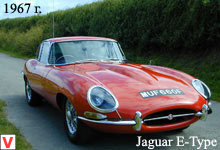
Other images auto Jaguar E-Type
